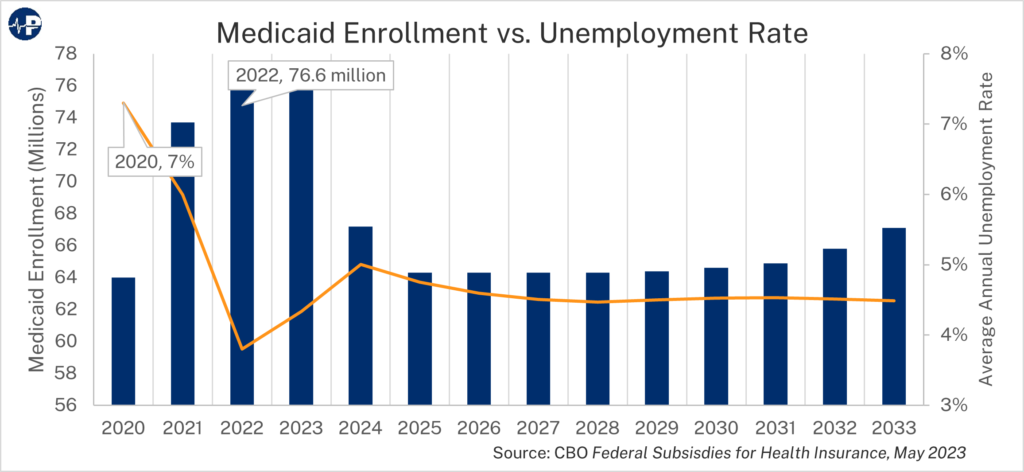On May 24, the Congressional Budget Office released its estimates of federal spending on health programs for Americans below the age of 65 as well as sources of health coverage. The media tends to focus on the coverage numbers from these reports despite vast amounts of evidence that health insurance is weakly related to overall health outcomes, but much more can be learned from these estimates.
Two major policy changes affect CBO’s estimates over the next several years, principally the end of the COVID continuous coverage requirements for Medicaid and the expiration of the enhanced Obamacare premium subsidies after 2025. Here are the 10 key takeaways from CBO’s report, which concentrate on the effects of Medicaid redeterminations and Obamacare trends.
1) Medicaid enrollment will significantly decline over next two years
According to CBO, Medicaid enrollment for those under 65 reached 76.6 million people last year. Medicaid enrollment soared over the past three years because states stopped doing eligibility reviews of program enrollees in early 2020. Those reviews have restarted in several states and will resume in all states soon. CBO estimates that 15.5 million people will be removed from Medicaid from this process.





